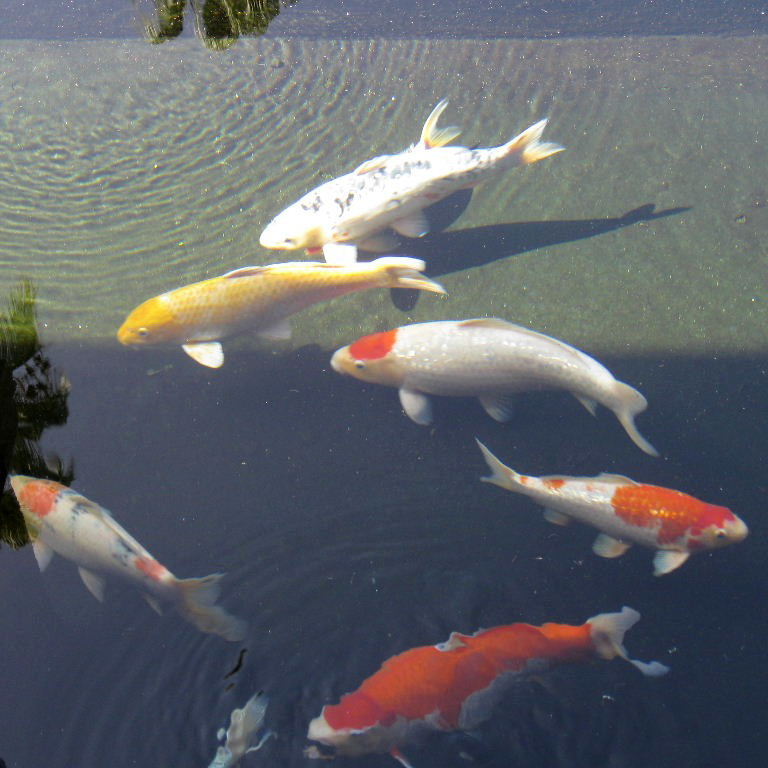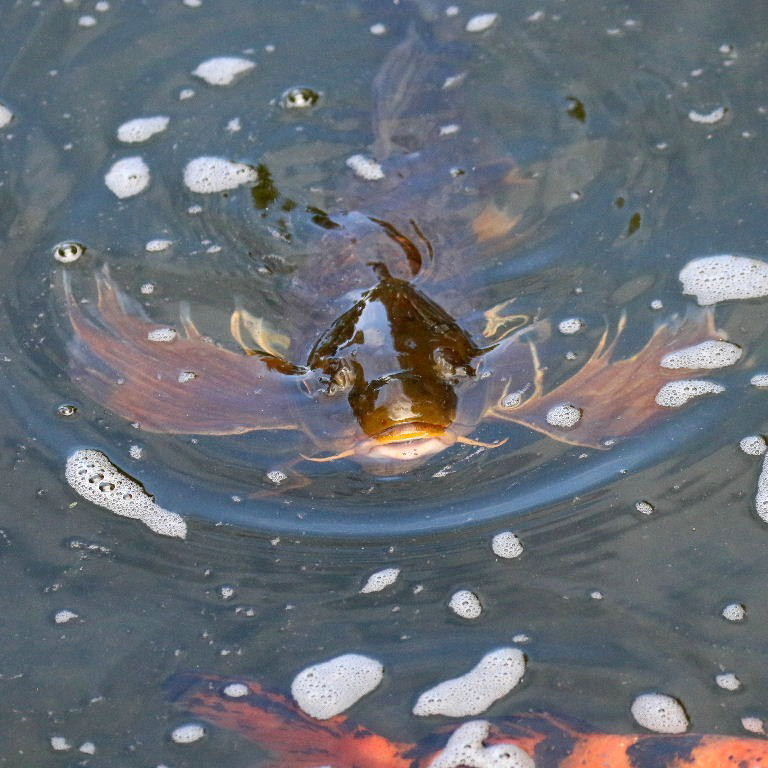Koi Carp Cyprinus rubrofuscus "koi"


Koi is short for Nishikigoi, "nishiki" refering to coloured, brocade fabric and "goi" being
the Japanese for carp. They are ornamental carp descended from the Asian Amur Carp, Cyprinus rubrofuscus.



Amur Carp were previously classed as subspecies of Common Carp, but are now generally
accepted as a separate species. Like their wild relative, Koi can grow to a metre long, but are usually less.



Developed initially in Chinese palaces, they were refined by the Japanese into an art form
(and obsession). The colours, patterns and scaling have different names and rigid standards.



The three main classes of Japanese Koi are Kohaku, (white body with red markings), Sanke
(as Kohaku plus small black markings) and Showa (also Showa Sanshoku, black body, with red and white markings),
but there are many others with variations of red, orange, yellow, cream, white, grey/blue, brown and black.



There are over 100 recognised varieties based on colours, patterns and scales.



One of the most sought after is the "Japanese Flag" with a pure white body and a round, red
rising sun shape on the head.



There are some hybrid species not considered true Koi. These are Butterfly Koi,
hybrids with Asian carp or Goldfish for flowing fins, and Ghost Koi, hybrids of Platinum Ogon (metallic white) Koi
with local Common Carp.



There are also Mirror Koi - crossed with Mirror Carp for a few scales along the dorsal and/or the lateral line
not considered true Koi.



Since they are descended from Amur Carp, Koi have barbels, unlike the smaller domestic Goldfish,
descended from barbleless Prussian Carp, Carassius genus. "Oh!"


